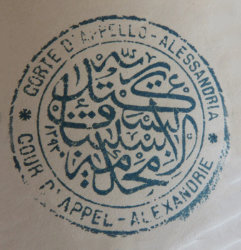The practice of ‘mixed courts’ in Egypt, Syria/Lebanon, and Tangier during semi-colonial times: an early example of ‘supranational law’?
Aya Bejermi


This project aims to explore the ‘mixed’/‘international’ legal order established in three regions subjected to semi-colonial control, which Michel Erpelding defines as a form of colonial domination based on the preservation of the host polity’s legal personality. These regions all experienced the creation of ‘mixed courts’.
In Egypt, mixed courts (maḥākim al-mukhtaliṭa) operated throughout the territory from 1876 to 1949 under various political regimes before, during and after British occupation. In Syria and Lebanon, the courts known as ‘juridictions des causes étrangères’ (maḥākim al-da’āwi al-ajanabiyya) were established between 1921 and 1946, during the French mandate. The Mixed Court of Tangier operated within the framework of the Tangier International Zone from 1925 to 1956.
My point of departure is 1876, when the Mixed Court of Appeals of Alexandria interpreted Article 11 of the Règlement d’organisation judiciaire portant sur les procès mixtes, in its seminal Cesare Carpi decision. Pursuant to that provision, the mixed courts had jurisdiction ‘whenever an administrative act had infringed upon a right acquired by a foreigner, as provided for by the Code’. The case law after Cesare Carpi tried to determine what would be considered a ‘simple’ administrative act harming an ‘acquired right’ by a foreigner and what would be considered as a ‘law potentially derogating from Egyptian codes’.
Looking at norms, institutions and actors, the research project seeks to answer the following questions:

- How did the Egyptian mixed court case-law evolve over time? Was it possible to assert similar rights in the context of Syria/Lebanon and Tangier?
- How did the Egyptian lawyers perceive the act of asserting acquired rights against the emerging Egyptian nation-state?
- More generally, how was the international legal order understood among academics and practitioners, both from the Western and non-Western world?
- Was there a shared understanding of the concept of ‘mixed’ law or jurisdiction among European jurists of different nationalities (eg, between French jurists and Swedish jurists)?
- Did the judges of the different mixed courts circulate among these courts and other ‘international’ or ‘supranational’ institutions?
- Did Western lawyers adapt in any way to the local context, and if so, in what ways? Did local (non-Western) judges and other legal actors play a more substantial role over time? Were there any adaptations to one particular style of legal tradition?
- What possible parallel(s) can be drawn with other international or supranational entities throughout that period and beyond, and what insights might such a discovery provide about EU institutions and EU law at its inception?
Hypotheses:

- The role played by traveling (international) jurists in the European integration law might have been influenced by their practice in the mixed courts.
- The existence for several decades of a supranational mixed law could have facilitated the creation of a supranational European law.



